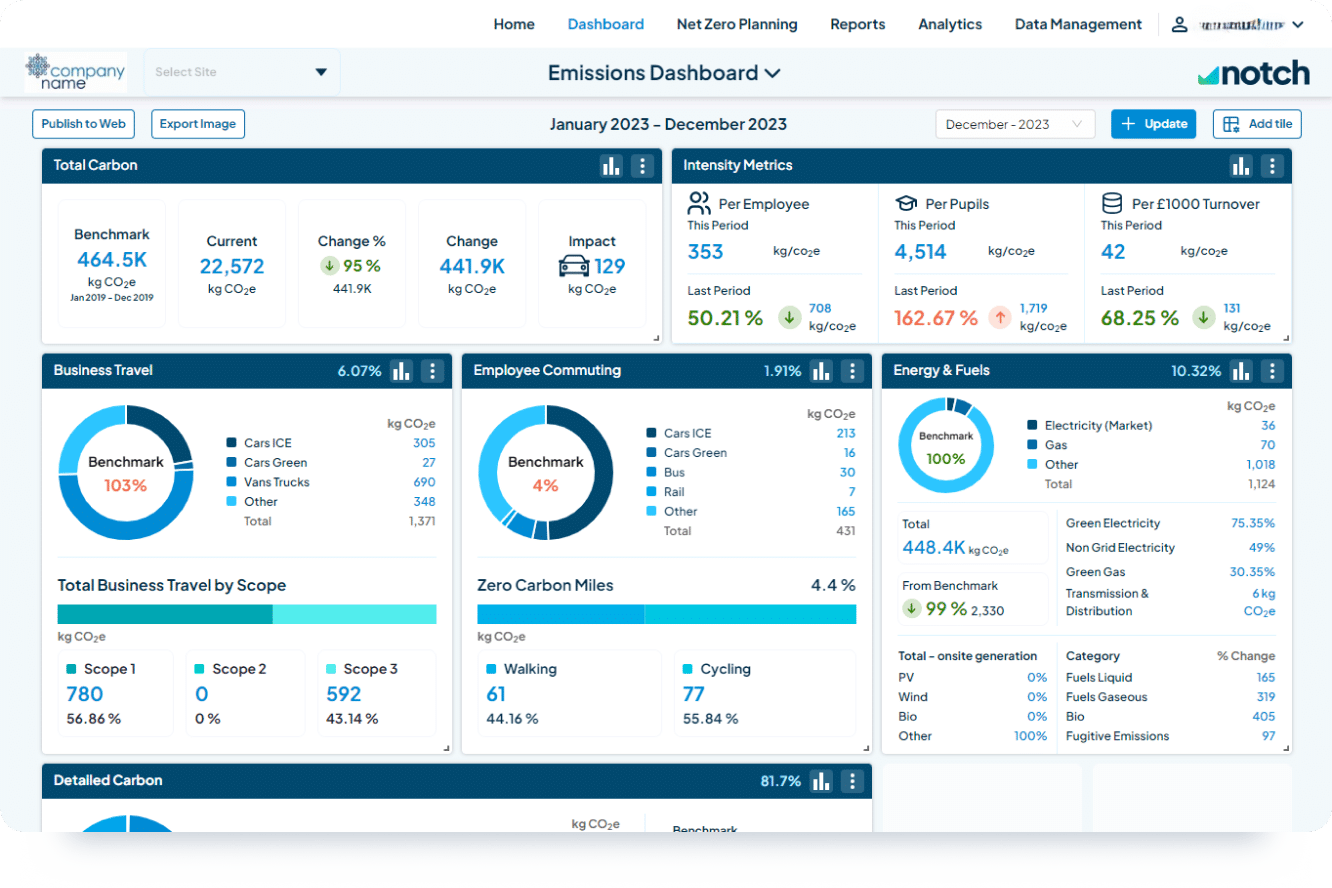The importance of having accurate energy management data to present to the C-suite or board of directors is now more prevalent than ever. With pressures for many organisations to define and reach their net-zero goals, businesses are required to have a detailed plan to showcase how they will meet their targets and require meaningful data to both influence and back their strategy up.
What makes an effective energy management strategy?
Energy is among the biggest cost areas for businesses currently —along with personnel, premises, and equipment. An effective energy management strategy can bring together two operations that are quite often siloed but can both help to reduce costs: procuring energy and managing its use. Typically, larger organisations have a procurement team that focuses on purchasing energy at the best possible price and developing a risk strategy and energy managers are usually working to reduce consumption and improve efficiency.
Businesses need to think about an effective energy management strategy that will cover not only the buying aspect but also how to reduce energy consumption over time. This should include how to phase out certain energy wastage methods, review what the company is doing well, pinpoint areas for improvement, analyse the data in-depth, identify savings opportunities and track progress throughout the months.
But you can’t manage what you don’t measure, and many firms can’t easily say how much energy they use to make these reductions. That’s where having access to accurate energy management data is so vital, it needs to be up-to-date and suitable to present at the board level.
Why is presenting energy management data to C-suite directors important?
More than 180 countries signed the Paris Climate Change Agreement, confirming their commitment to keeping rising global temperatures ‘well below’ 2 degrees C, above pre-industrial levels and aiming to limit them even more to 1.5 degrees C. Because of this, c-suite directors are feeling the pressure to reduce their carbon footprint from all angles including Government net-zero legislation, internal pressure from employees and external pressure from the rise of ethical customer expectations and within the supply chain.
Not only this but many organisations, due to their size and capacity, also have to comply with mandatory schemes, such as Streamlined Energy and Carbon Reporting (SECR) and the Energy Savings Opportunity Scheme (ESOS). Many of these reports and disclosures are based on energy and carbon emissions data and contain recommendations for consumption reduction initiatives and energy efficiency improvements.
An energy management strategy will be hard to implement without engagement from the C-suite and the rest of the business.
What do C-suite directors need to know?
C-suite directors need to understand, influence, and communicate their company’s position and plan to mitigate climate change. They also need reassurance from their internal teams that the organisation is utilising the most efficient ways to control, monitor and report their energy usage.
Monitoring and analysing energy use can reveal operating issues that affect performance, and quality and uncover efficiency opportunities. Whilst the c-suite may not want to understand how every individual asset is performing across their portfolio, they will want collated, comparable data sets, transformed into clear, engaging representations of a site’s energy profile.
These visuals should then help them to understand how to maximise energy efficiency skills, capacity, and capability, think about the investment required in best value energy consumption reduction projects and new technologies to implement, and how to encourage and maintain internal behavioural change through low and no-cost measures.
Once an organisation has a clear understanding of its energy impacts, it can develop its cost and carbon targets and its corresponding energy management strategy. Setting and communicating targets signals the organisation’s commitment to its supply chain and customers, plus, it also helps to drive accountability and align internal teams.
Top tips for energy managers on how to present energy data
- Use charts to visually display data – excel documents can be difficult to interpret and read
- Dashboards on your energy software can be shared showing comparative data (league tables against multiple sites within a portfolio that can be reviewed monthly / yearly)
- Include drill-down functionality in your reporting to allow colleagues to interrogate the data further if they wish
- Present the data alongside the organisation’s targets
- Show granularity – electricity and gas should be recorded through half-hourly meter data
- Demonstrate the investment and ROI of major capital items for example – LED lighting/ heating and cooling systems
How can SystemsLink help?
SystemsLink provides a sophisticated energy monitoring & targeting software package which enables businesses to visualise the amount of energy used and provides insights into how to eliminate waste, showing comparative data and allowing you to review multiple sites within a portfolio.
Our data automation service automatically transfers mandatory Half Hourly, AMR and BEMS data to the software, giving you real-time data for reporting as well as automatically updating dashboards with up-to-date information.
Get in touch with our experts
Speak to our team who have helped many other energy managers with the tools and knowledge to effectively present energy management data to stakeholders and help with their monitoring and targeting requirements.
Contact sales@systems-link.com or call 01234 988 855.




